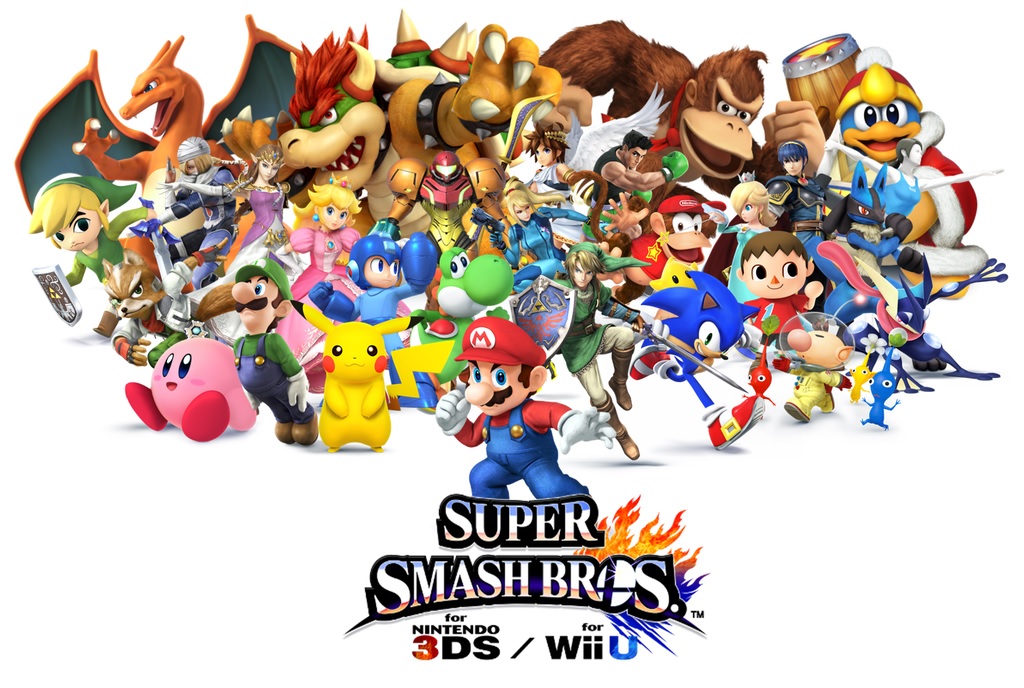
Review: Super Smash Bros. for 3DS
I want to snap my Nintendo 3DS in half and it’s Super Smash Bros.‘ fault.
As a follow up to 2008’s Super Smash Bros. Brawl, the 3DS version of Smash Bros. does not disappoint. I really did not like Brawl; it’s hard to describe why, exactly, but one word comes to mind: “mushy”. Mushy controls, mushy balance, mushy everything. That’s been corrected in Super Smash Bros. 3DS, and for the most part, the game feels a lot faster and more responsive. Every returning fighter has had some kind of tweak to just make them feel better overall. You’ll be surprised at how nimble a character like Princess Peach is, or how dangerous Sonic the Hedgehog can be when put in the right hands. That’s clearly not a problem.
No, my problem is with its new headline mode, “Smash Run”. Designed to act as a replacement for Brawl’s bloated and tedious “Subspace Emissary”, Smash Run seems absolutely brilliant when you are cluelessly being juggled by a Shyguy. But the more you learn about Smash Run, the less fun it becomes. When you begin Smash Run, you’re dropped in to a massive map with a countdown timer of five minutes. You spend those five minutes exploring the area and beating on familiar enemies like Egg Robos, Starmen, Kremlings and Pokemon. Every defeated enemy drops power-ups used to level up your character’s stats, all building up to a final battle against three other players (who have been going through their own version of Smash Run, also building up their stats).
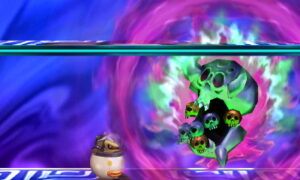
Smash Run doesn’t play fair.
As you start to feel Smash Run out, the mode seems like it has massive potential. With the constantly remixed locations of items, doors and enemies, for a brief moment it seemed to contain a tinge of the rogue-like platformer Spelunky. Unfortunately, Smash Run lacks the finely-tuned nuance of Spelunky, instead opting for what boils down to a random number generator. Things are always happening in Smash Run, but none of it can be predicted. One moment you might find yourself bombarded by dozens of Bullet Bills, and the next, an announcement informs you that all defeated enemies now drop power-ups that only increase your jump height stat and nothing else. Maybe the game points you to a special event only for you to discover three of the game’s most powerful enemies have tagged along for the ride. They all gang up on you, and the one with the giant hammer sends you flying hundreds of feet away from any solid land. Falling for more than 10 seconds, you see nothing but the sky around you before you eventually die and lose half of your collected stats. Battered, bruised and frustrated, with your massive Jump stat, you find that the final battle is a race to the finish and you’re the slowest character in the match by far. You just wasted the last five minutes getting your head handed to you on a silver platter, powering up an ability that only now are you informed was useless. Welcome to Smash Run.
When discussing old Mario Karts and their trend towards unpredictability, the topic of conversation has occasionally fallen to its relation to Smash Bros. Smash is a game primarily focused on chaotic events, from random weapons dropping out of the sky to stages changing shape underneath a combatant’s feet, yet it lacks the ability to incite rage for doing so. Losing in Mario Kart feels significant. You could spend the entire duration of a race in 1st place only to have your win stolen from you on the final turn of the last lap. Smash Bros. is more moment-to-moment. Taking a Home-Run Bat to the face doesn’t feel as world-ending as Mario Kart‘s Blue Shell, because fighting games are more about momentum. If you lose a match in Smash Bros., it’s a gradual process that happens over the course of the entire fight. You often know whether or not you’re actually going to lose minutes beforehand. Smash Run bridges the gap to the worst elements of Mario Kart; that you could invest so much time and effort in to winning only to have the rug pulled out from under you at the last second by an unseen, uncontrollable force. The only strategy to use when playing Smash Run is to have no strategy at all. The more you try to plan things out, the more Smash Run will rebuke you using nothing but raw unpredictability. It is infuriating.
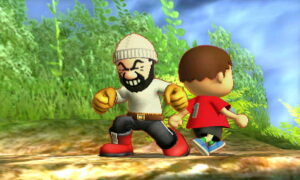
Unfortunately, Smash Run is inescapable, as it directly feeds in to one of the other big new additions to Smash Bros. 3DS: character creation. Throughout much of Smash Bros., you’ll occasionally run across gear that can be equipped on existing fighters, or can be used to create a brand new fighter using whatever Mii characters exist on that system. Mii fighters are broken down in to three separate classes: Brawlers, Sword fighters, and Gunners, each with class-specific costumes and equippable gear. Unfortunately, much like the now-iconic Smash Bros. trophies, all of this gear has to be collected and unlocked. The quickest way to do that is to play Smash Run, where these items are frequently stashed inside the game’s dozens of treasure chests. Costumes and gear actually become the game’s most valuable collectables, with the aforementioned trophies taking a back seat as more of a “legacy feature” – but it also means you’re going to be spending a lot of time suffering through Smash Run in order to get them.
If it sounds like I’m spending a lot of time harping on Smash Run, it’s because it’s given prime real estate on the main menu as one of the primary things you see every time you boot the game up. Smash Bros. games are often celebrated for their interesting menu designs, but on the 3DS, you’re left with a collection of oddly-shaped icons scattered around the screen that don’t really fit together. The entire rest of the game is hidden inside of the “Games & More” option on the main menu, positioned just under Smash Run. It’s here you’ll find Classic Mode, All-Star Mode, Home-Run Contest, and the all-new Target Blast. Target Blast would be great fun if only it felt a little more consistent. It has the same setup as the Home-Run Contest, but instead of batting a sandbag for distance, you’re knocking a bomb in to a wooden structure, similar to Angry Birds. Like Home Run Contest, the bomb is contained in a small force field so you can build up damage in order to smash the bomb harder and make it travel farther. But unlike Home-Run Contest, sometimes the bomb will fall out of the force field area from the weakest hit and you’ll waste a shot. You’re never provided any feedback as to why this happens, making the appeal of Target Blast feel pretty limited. Like Smash Run, there’s a lot of potential there, but it gets unpredictable at the worst times.
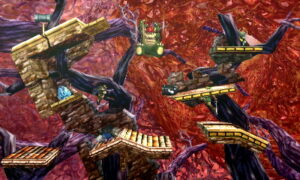
If any of this sounds like a bummer, you’ll be happy to know that the part that matters, the actual Smash Bros. gameplay, still remains solid. The controls feel snappy, the game moves at a good pace, and has all of the options you’d expect from the franchise. Overall, the basic fighting system has been rebalanced to make recovery easier and offensive play more risky. It is now more important than ever to be able to execute a “Meteor Smash”, a high-skill maneuver that requires the attacker to jump out of the safety of the arena and spike their opponent in to the bottomless pit below – while not falling in to the pit themselves. Without it, matches tend to go on for quite a bit longer than usual, as it is easier than ever to make it back to the arena without being KOed. Smash for 3DS embraces skilled, technical play in a way you don’t typically see from Nintendo games. Unfortunately, the 3DS itself does not appear to be the greatest venue for such an experience. The small screen resolution means it is easier than ever before to lose track of where your character is during chaotic battles. On more than one occasion I’ve actually lost a fight because for a split second I was looking at the wrong character, and that’s all it takes. Smash 3DS does try to make up for this by giving characters colored outlines to help them stand out, but it doesn’t always work.
Should you take the game online, you’ll find Nintendo’s most robust multiplayer implementation yet. Like Mario Kart 8, it’s easy to see whether or not friends are currently playing the game and join them. The addition of being able to specify whether you want to play seriously or just have fun is a remarkably smart move. While playing online, latency is about what you would expect. When playing with friends, everything was smooth and responsive, but dipping in to public games with random strangers, results predictably varied quite a bit. Overall, it’s an improved experience over trying to play Super Smash Bros. Brawl online, which struggled to keep up with just two players. Regardless, between Mario Kart 8 and now Super Smash Bros., I’m really starting to feel the gaps in Nintendo’s online infrastructure. Every other platform worth its salt has some sort of cross-game invite system, but the only way you’ll be able to ask your friends if they want to play Smash Bros. with you is to do it the old fashioned way. It’s not the end of the world or anything, but if I have to use a second device to ask somebody if they want to play a game with me on the first device, that’s a problem worth fixing.
Super Smash Bros. for 3DS isn’t perfect. Some of its problems may very well be fixed in the upcoming Wii U version of the game, and some can’t be fixed without extensive updates to the system firmware. Other features feel a little undercooked; the potential is there, but things just fall a little short of being amazing. But at its heart, the core of Super Smash Bros. still rings true. If all this game has ever been to you is something to play with your buddies, you aren’t going to be disappointed. Just be wary should you venture beyond those sacred walls.




![Private: [ID: vs1GGKL78Jw] Youtube Automatic](https://lastminutecontinue.com/wp-content/uploads/2025/02/private-id-vs1ggkl78jw-youtube-a-360x203.jpg)
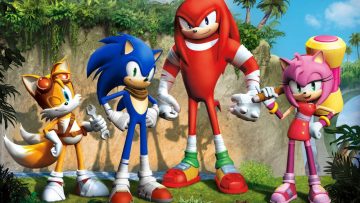
![[ID: 8dYLZNaZNEs] Youtube Automatic](https://lastminutecontinue.com/wp-content/uploads/2021/03/id-8dylznaznes-youtube-automatic-360x203.jpg)
![[ID: Zs5HIgRklyk] Youtube Automatic](https://lastminutecontinue.com/wp-content/uploads/2023/05/id-zs5higrklyk-youtube-automatic-360x203.jpg)